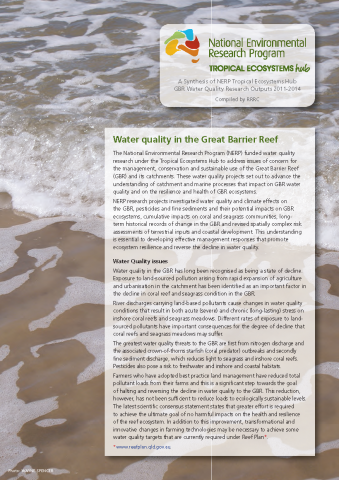Resources
 Andrew Negri (AIMS); The chronic effects of pesticides and their persistence in tropical waters; Thursday 9th May 2013.
Andrew Negri (AIMS); The chronic effects of pesticides and their persistence in tropical waters; Thursday 9th May 2013.
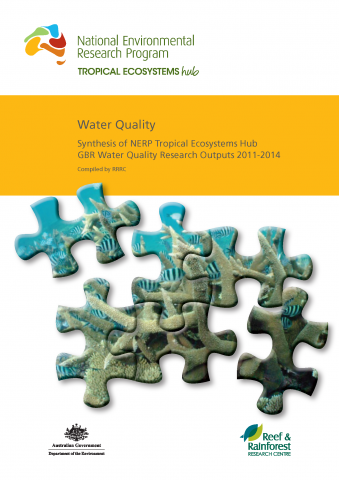 Devlin, M., Fabricius, K., Negri, A., Brodie, J., Waterhouse, J., Uthicke, S., Collier, C., Pressey, B., Augé, A., Reid, B., Woodberry, O., Zhao, J-x., Clarke, T., Pandolfi, J., Bennett, J. (2015) Water Quality - Synthesis of NERP Tropical Ecosystems Hub Water Quality Research Outputs 2011-2014.
Devlin, M., Fabricius, K., Negri, A., Brodie, J., Waterhouse, J., Uthicke, S., Collier, C., Pressey, B., Augé, A., Reid, B., Woodberry, O., Zhao, J-x., Clarke, T., Pandolfi, J., Bennett, J. (2015) Water Quality - Synthesis of NERP Tropical Ecosystems Hub Water Quality Research Outputs 2011-2014.
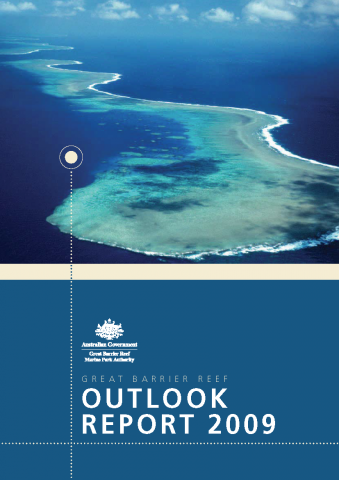 The Great Barrier Reef Outlook Report 2009 is a stock-take of the Great Barrier Reef, its management and its future.
The Great Barrier Reef Outlook Report 2009 is a stock-take of the Great Barrier Reef, its management and its future.
The aim of the Outlook Report is to provide information about:
- The condition of the ecosystem of the Great Barrier Reef Region (including the ecosystem outside the Region where it affects the Region);
• Social and economic factors influencing the Great Barrier Reef ecosystem;
• Management effectiveness of the Great Barrier Reef; and
• Risk-based assessment of the long-term outlook for the Region.
The Report underpins decision-making for the long term protection of the Great Barrier Reef. It was prepared by the GBRMPA based on the best available information and was independently peer reviewed. Many people contributed to the development of the Outlook Report including:
• Australian and Queensland Government agencies
• Leading Great Barrier Reef scientists and researchers
• Industry representatives
• Advisory committees
• Members of regional communities and the public.
The publication of an Outlook Report was a key recommendation of the review of the Great Barrier Reef Marine Park Act 1975. A report is to be prepared every five years and given to the Minister for Sustainability, Environment, Water, Population and Communities for tabling in both houses of the Australian Parliament.
The Great Barrier Reef Outlook Report 2009 is the first of these reports.
 Herbicides used to control nuisance weeds on the farm can also be effective once they get into the ocean; even in minute quantities such chemicals have been shown to cause stress to corals, algae, mangroves and seagrass. A little stress has a greater impact than you might think...
Herbicides used to control nuisance weeds on the farm can also be effective once they get into the ocean; even in minute quantities such chemicals have been shown to cause stress to corals, algae, mangroves and seagrass. A little stress has a greater impact than you might think...
Dr Andrew Negri of AIMS presented an overview on the effects of pesticides, particularly herbicides to organisms in the GBR. Pesticides, particularly herbicides from agricultural sources, have been detected all year round near the shore in the GBR. Those called PSII herbicides are of greatest concern and have been found in the highest concentrations in the wet season, at levels known to affect marine organisms. They also remain in the water for a surprisingly long time, some with half-lives of up to 1200 days.
Dr Negri then looked at sensitivity, and found that two seagrass species (Halodule and Zostera) were as sensitive as corals and algae to four commonly used herbicides found in the GBR (Diuron, Atrazine, Hexazinone and Tebuthiuron) and that Diuron could affect photosynthesis at flood plume concentrations.
Herbicides also increase the sensitivity of corals to thermal stress, meaning that as climate change sets in, things could get serious. It is not expected that herbicides alone would pose a threat, but if corals are already stressed by increases in turbidity, sedimentation, increased nutrients and pesticides, the addition of rising temperatures, ocean acidification and changed weather patterns may have severe effects, additive or worse.
These foundation species (i.e. seagrass, mangroves and corals) are highly sensitive to pesticides, and the research suggests that pesticides increase their vulnerability to climate change, leading to the Dr Negri to the conclusion that efforts to significantly reduce pesticide contamination of the GBR should continue. To that end, research users have been engaged, a pesticide working group formed and his results have been incorporated into the risk assessment process for the Reef Plan Scientific Consensus Statement.
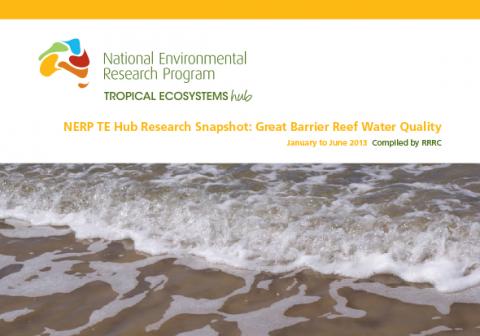 A snapshot of the research progress within the Great Barrier Reef Water Quality node for January to June 2013.
A snapshot of the research progress within the Great Barrier Reef Water Quality node for January to June 2013.
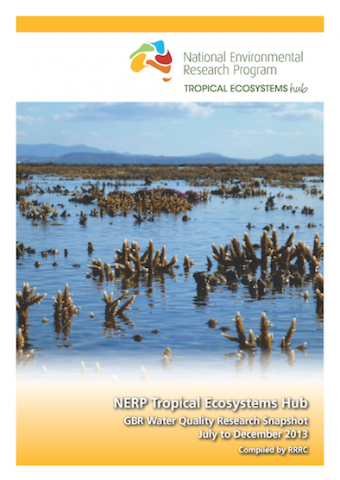 A snapshot of the research progress within the Great Barrier Reef Water Quality node for July to December 2013.
A snapshot of the research progress within the Great Barrier Reef Water Quality node for July to December 2013.

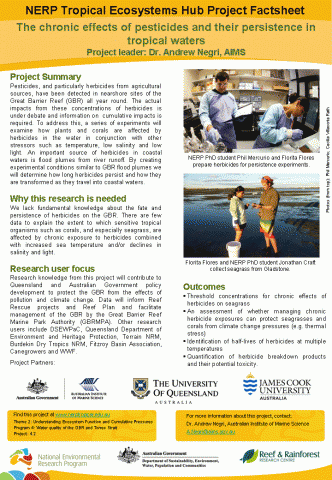 Pesticides, and particularly herbicides from agricultural sources, have been detected in nearshore sites of the Great Barrier Reef (GBR) all year round. The actual impacts from these concentrations of herbicides is under debate and information on cumulative impacts is required. To address this, a series of experiments will examine how plants and corals are affected by herbicides in the water in conjunction with other stressors such as temperature, low salinity and low light. An important source of herbicides in coastal waters is flood plumes from river runoff. By creating experimental conditions similar to GBR flood plumes we will determine how long herbicides persist and how they are transformed as they travel into coastal waters.
Pesticides, and particularly herbicides from agricultural sources, have been detected in nearshore sites of the Great Barrier Reef (GBR) all year round. The actual impacts from these concentrations of herbicides is under debate and information on cumulative impacts is required. To address this, a series of experiments will examine how plants and corals are affected by herbicides in the water in conjunction with other stressors such as temperature, low salinity and low light. An important source of herbicides in coastal waters is flood plumes from river runoff. By creating experimental conditions similar to GBR flood plumes we will determine how long herbicides persist and how they are transformed as they travel into coastal waters.

van Dam, J.W., Negri, A.P., Mueller, J.F., Altenburger, R., Uthicke, S. (2012) Additive Pressures of Elevated Sea Surface Temperatures and Herbicides on Symbiont-Bearing Foraminifera. PLoS ONE. 7(3): e33900 [doi:10.1371/journal.pone.0033900].
* Funded by DEWHA (MTSRF)

Magnusson, M., Heimann, K., Ridd, M., Negri, A.P. (2012) Chronic herbicide exposures affect the sensitivity and community structure of tropical benthic microalgae. Marine Pollution Bulletin. 65, 363-372 [doi:10.1016/j.marpolbul.2011.09.029].
* Funded by JCU and AIMS
